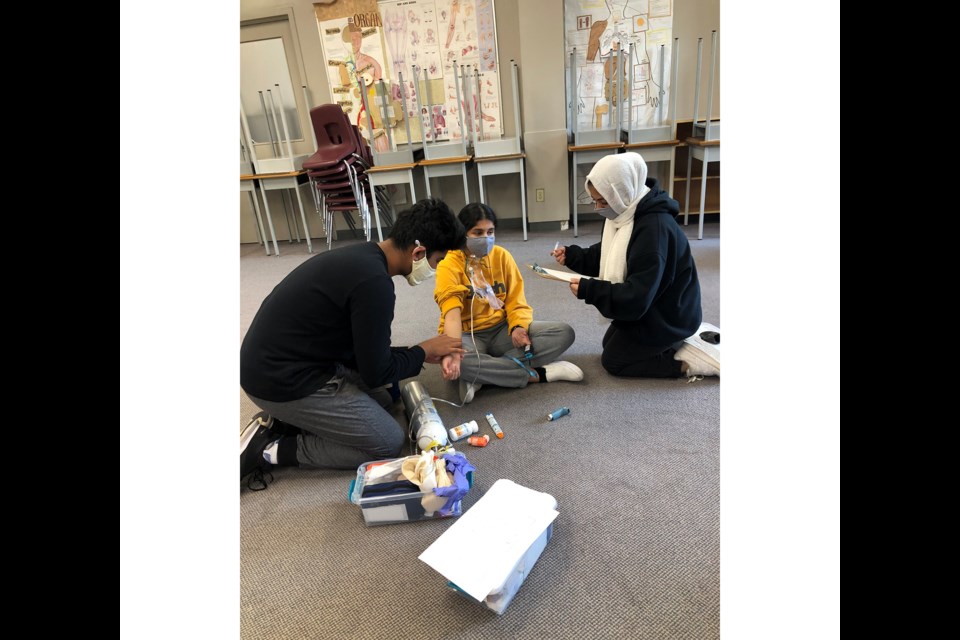Twenty students at Cambie secondary are now certified first responders – and are trained to administer naloxone, oxygen and prevent disease transmission – after successfully completing the school’s new medical science program.
Through the program, students earn two certificates under the Canadian Red Cross, standard first aid and CPR-C and first responder certification – the “big one” – said Sarah Ardat, who teaches and helped launch the program.
“So they’re basically just as qualified as firefighters…It’s a big deal. It’s a professional certification.”
Through the program, students learn hands-on how to check blood-glucose levels, how to use a pulse oximeter to check someone’s oxygen saturation level and then administer oxygen, and how to administer certain drugs, such as epi-pens or asthma medication.
But that’s not all students learn during the program.
Inspired by B.C.’s two public health emergencies – COVID-19 and the opioid crisis – Ardat explained the course also trains students in disease transmission and how to administer naloxone.
The naloxone training also helped raise the students’ awareness of the opioid crisis and the effects drug use has not only on the users, but on their families, said Ardat.
“I started to see that they empathize a little bit more,” she said.
A separate certification under the Canadian Red Cross, preventing disease transmission, teaches the students the various factors that are required to get a disease and also how the chain of transmission can be broken.
The new medical science program, for Grade 11 and 12 students, was launched in September, as a hands-on, practical replacement to the school’s long-running health science program, Ardat said. It was launched with the help of Jeff Watts, a retired advanced care paramedic who now works with the Greater Vancouver Medical Assistants and Services Team Society.
Typically, the first responder course (a total of 44 hours) and the standard first aid course (16 hours) are completed over three weekends, said Ardat. However, in the school setting, the material is spread out over the course of the current, quarter system, giving students more time to learn, practise and retain the skills.
The 20 students who passed the program now make up the school’s first responder team. While the school always had a first responder team, those students came out of the weekend courses.
The students wear pagers so they can respond to any medical emergencies in the school, for example, ankle or wrist injuries or someone passing out, said Ardat.
The goal for next year is to also run an emergency medical responder (EMR) course, said Ardat, which is a level up from the first responder certification and is required for anyone who wants to be a paramedic.
Ardat also hopes to expand the program beyond Cambie.
“One thing that we hope to do is not just have this (program) for our school, but to open it up…so that students across the district or across the Lower Mainland can come here and take it.”



